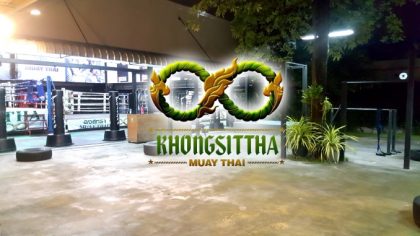How long does it take to get a black belt?
Fewer than 3 days… if you use priority shipping. Okay now, seriously…
Generations of martial artists have asked the very same question – how long does it take to get a black belt? Being curious about it is normal.
Deep down, everyone has an innate need to measure progress. We all want to feel a sense of certainty and know our destination when striving towards a goal – even in martial arts.
So, let’s delve into what it means to be a black belt and learn how long it takes to become one.
Here’s what we’ll cover.
Origins & Purpose of Martial Art Belts
Before tackling the question, you need to know the significance of holding a black belt. It isn’t what you think.
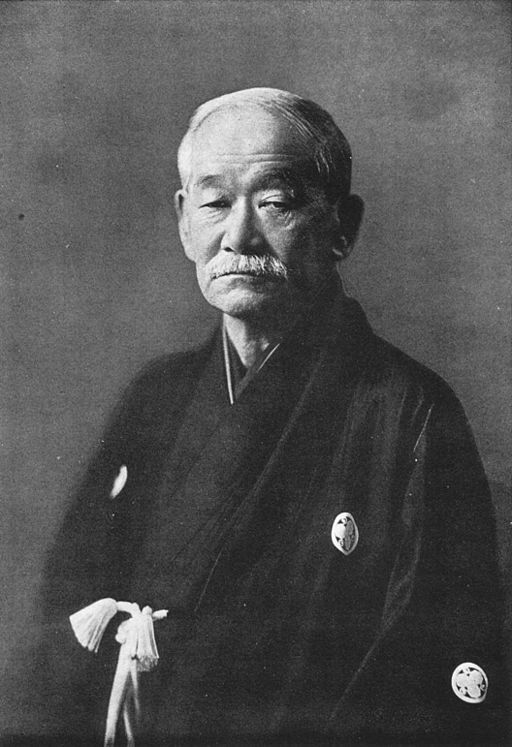
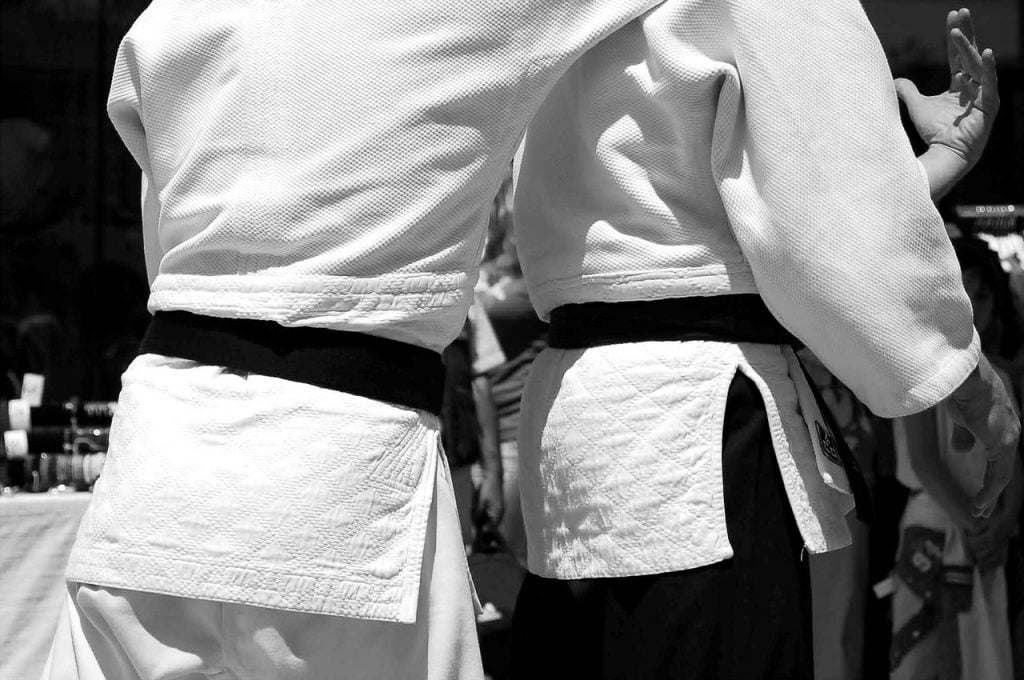
Many people regard the black belt as the ultimate goal of a martial artist. They believe that getting it is the be-all and end-all of their training.
After all, a black belt equals mastery of a martial art, doesn’t it? That’s likely why you’d want to quantify the time taken to get one, right?
The problem is… black belt doesn’t represent mastery; not even close.
Here’s a brief history of the martial arts belt system, which will help you understand what it originally meant to be a black belt…
Menkyo Grading System for Traditional Koryu Martial Arts
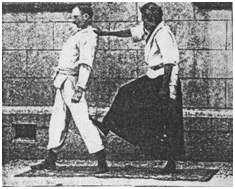
Before modern martial arts (gendai budo) were founded, the Japanese people trained in traditional martial arts. These were known as koryu bujutsu.
For simplicity, koryu bujutsu can trace their origins to 1868 and before.
What’s unique about koryu martial arts is the menkyo grading system. This grading system lengthens the time taken for martial certification.
Instead of belt colours, the menkyo system was based on licenses. Each license recognizes the practitioner’s competence in a set of techniques, which take years to attain.
Eventually, a practitioner becomes eligible for Menkyo Kaiden (a final license that permits them to transmit the full martial art). The award of Menkyo Kaiden is, of course, based on the head instructor’s discretion.
Kito-ryu, the main ancestor martial art of Judo, used the menkyo system.
Modern Kyu/Dan Ranking System (Martial Arts Belt System)
Modern Japanese martial arts adopted the belt ranking system that was invented by Kano Jigoro, founder of Judo.
Started with only White and Black Belt
At first, Kano only wanted a way to recognize his students by dan rank and the lack of one.

So, he designated only two obi belt colours: black and white in 1886. Black was for ranked practitioners (yudansha), while white was for unranked practitioners (mudansha).
Since martial art uniforms (gi) had not been invented yet, martial arts practitioners wore kimono. Their “belts” were simply traditional obi.
More Belt Colours & Modern Belt System Adopted by Other Martial Arts
After Judo began to spread to the west, Mikonosuke Kawaishi added more belt colours.
His rationale for doing so was to help motivate western practitioners and demonstrate how they were progressing. Using the old Menkyo system, or the original black-and-white-belt-only system would have discouraged many would-be beginners from even training.
Other martial arts like Karate, Aikido, and even non-Japanese combat styles began to adopt and adapt the Judo belt system for their own needs.
So, what did the black belt originally represent?
For many martial arts, earning your first-degree black belt (shodan, chuduan) doesn’t make you an expert or master. It merely signifies that you have a high level of competency in a set of techniques.

According to the longitudinal study ‘A way to mastery. Mastery in martial arts‘, a first-degree black belt martial artist “does not know the whole curriculum yet”. So, how can a person who does not know the full syllabus be known as a master?
Moreover, in Japan, martial artists generally need to attain at least a fifth-degree black belt (godan) before being conferred a separate title of instructor. This information is taken from the very same study.
Even more compelling, Jigoro Kano (founder of Judo and creator of the martial art belt system) intended the first black belt rank “to signify completion of the first step of training“. There are ten levels of black belt altogether in Judo!
So, if you believe the black belt indicates true mastery of a martial art, you are way off. First-degree black belts are literally beginning to become masters.
Are there Differences in how the Black Belt is regarded?
Surprisingly, the way the west and east regards the black belt (first-degree) is rather different.
Martial artists who train outside the martial art’s country of origin, tend to overstate the importance of the first-degree black belt. It’s as though someone with a first-degree black belt is some sort of grandmaster.
Perhaps this contrast is due to differing cultural perception.
Ultimately, dojos affiliated to Japan (or any other origin country) headquarters do share a similar idea of what first-degree black belt signifies – beginners to the journey. However, while the origin country takes the word “beginner” literally, foreign martial artists regard it as an abstract description.
An Exception: Brazilian Jiu-jitsu
Brazilian Jiu-jitsu’s (BJJ) first-degree black belt is an exception to the original significance given by Kano to the black belt. Unlike its ancestor martial art, Judo, BJJ’s belt colour representation is different. Rigorous sparring experience is also a huge factor in grading.
Where a first-degree black belt is often regarded as a beginner in Japan (not qualified to be master), first dan black belts in BJJ are considered experts.
Having established that black belts (at least in the initial few degrees) are beginners in the sense of the journey, let’s further explore what being a black belt means.
What does it mean to be a black belt?
If you’ve trained in martial arts for a long time, getting a black belt must be the worst letdown ever. There’s so much hype about it. But nothing actually changes after you receive it.
Think about it.
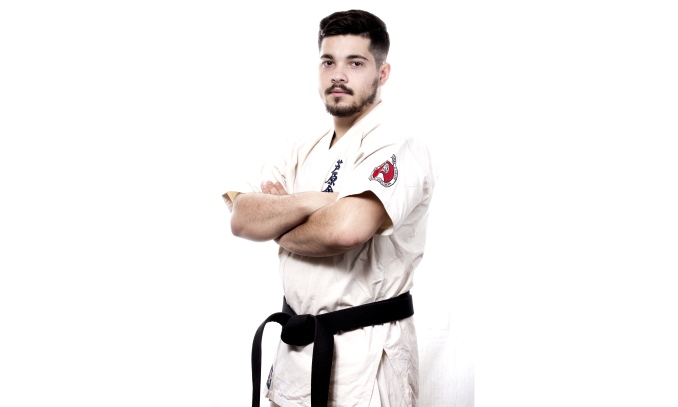
Nothing Special Happens
You don’t suddenly feel fearless. And, you certainly don’t gain extraordinary skills.
If your techniques were shit before, that fact doesn’t change after getting your black belt. Of course, you can hide your inadequacies behind the belt. However, the truth reveals itself eventually, if you want a black belt before being ready for it.
You don’t feel worthy of the belt
It often takes time for a new black-belt to feel worthy of their belt. Overall proficiency in a set of techniques doesn’t mean being equally good in all techniques. Hence, you often have to train harder on your weaknesses to truly be on par with what the belt signifies. This makes it evident that black belt doesn’t necessarily mean mastery.
Taking the Process for Granted
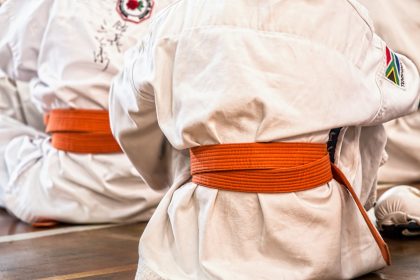
What many people know, but fail to internalize, is that the black belt is a culmination of training from the time a person has a white belt. It is the endless trials, mistakes, feedback and corrections that fine-tunes a skill.
In that journey, the martial artist also gains an intuitive grasp of how to deal with sudden attacks.
So no. You don’t just get a black belt for showing up. You earn it.
Your journey to mastery has only BEGUN
In fact, a black belt does not even represent the end of your martial arts journey. The process of fine-tuning never ends.
Instead, it signifies that you are reasonably proficient in most of your techniques, which allows you to explore advanced concepts. Without strong fundamentals, forget about even exploring anything abstract.
So, if you are among those who regard the black belt as a status symbol, then welcome to “worshipping” an illusion. You have a lot more work to do for true mastery.
So, what does it mean to be a black belt?
Take the black belt for what it is – a piece of cloth that tells you that you are ready to pass the gateway.
What gateway?
The gateway that separates what you know you already know (fundamentals) from insights that you don’t even know existed. The journey never ends.
So, are there better questions to ask if you are interested in proficiency and mastery?
The Way to Black Belt: A Comprehensive Guide to Rapid, Rock-Solid Results
This is a great book that practically prepares you to get a black belt and become a better martial artist.
Clarifying the question
Is it really a question of black belt or true mastery of your martial art?
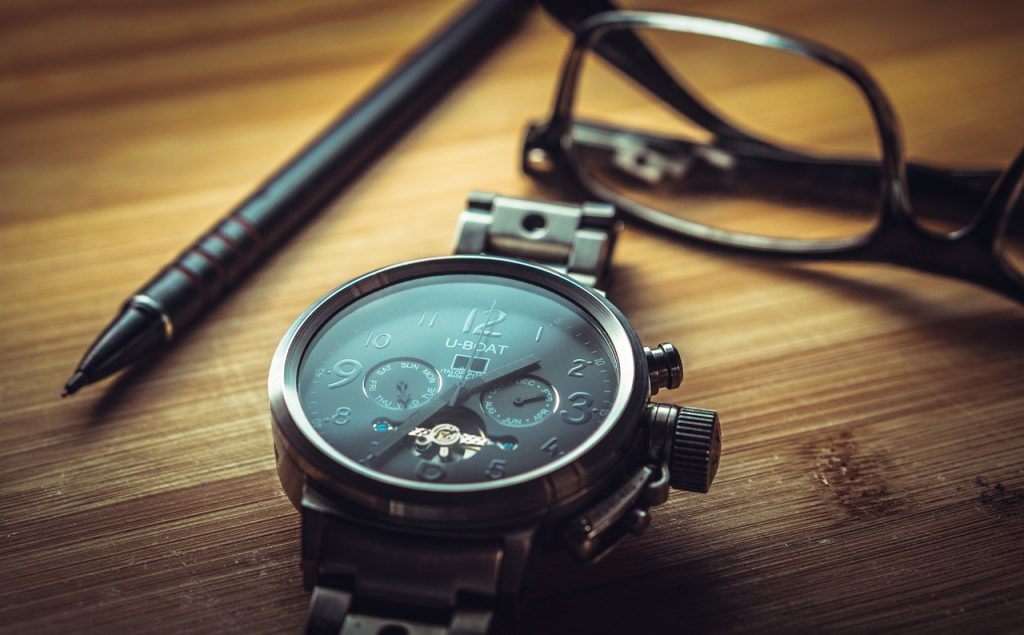
When someone asks “how long does it take to get a black belt?”, more often than not they are asking about the time taken for martial art proficiency and mastery.
So, let’s be clearer and refine the question for martial artists in various stages of their journey.
- Mudanshas (Non-Black Belts) – How long does it take to get a black belt (first-degree) in various martial arts?
- Beginners – How long does it take a beginner to learn a martial art (with average proficiency)?
- Everyone – How long does it take to master a martial art?
We’ll tackle only the black belt question today, and answer the latter two questions in the next part of the series.
So…
How long does it take to get a black belt – in various martial arts?
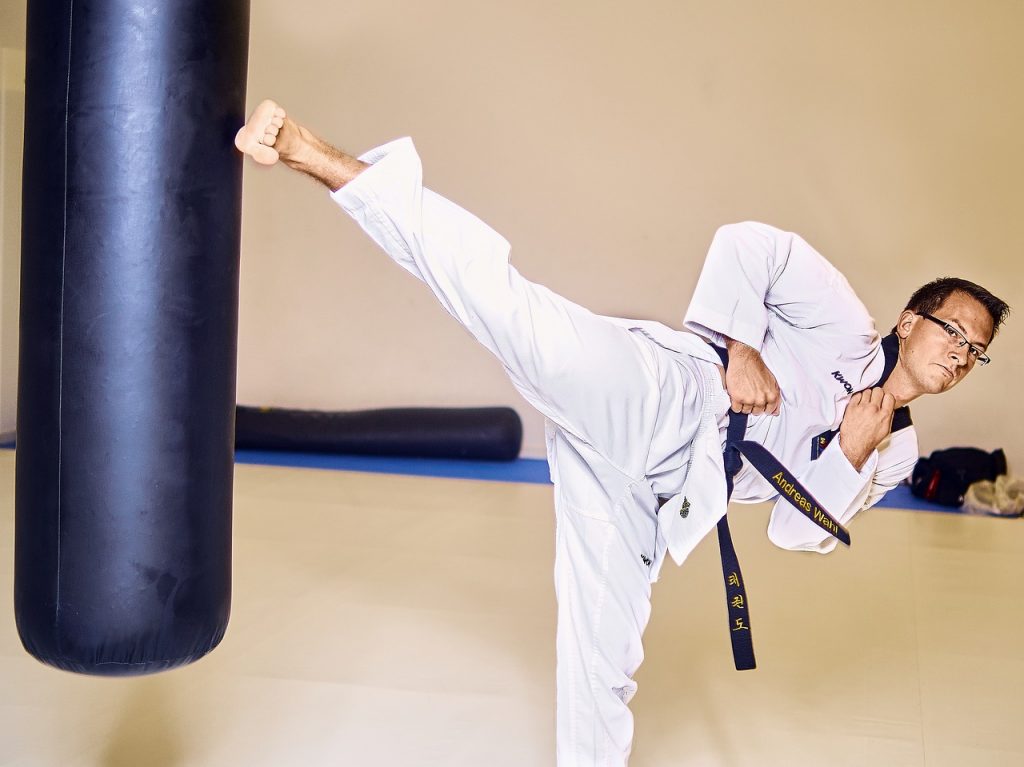
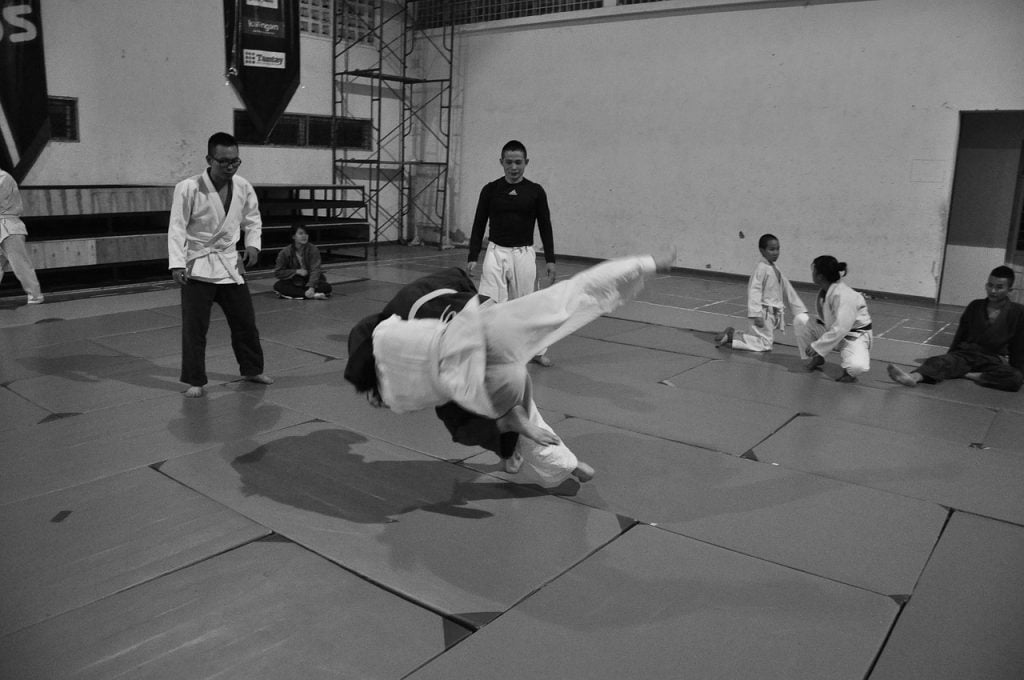

According to a longitudinal study (conducted from 1998 to 2014), the average time taken to get a first-degree black belt is ten years. Of course, this duration differs among various martial arts. The shortest recorded training time is four years, while the longest to get a first-degree black belt is twenty-seven years.
The study measured the time taken for these martial arts: Aikido, Iaido, Judo, Jujutsu, Karate, Kenpo, Kobudo, Taekwondo and Wing Chun. It also used an approximate grade for martial arts that do not traditionally award black belt.
Differences between the martial art’s origin country and foreign countries
Yet, on various forums, many agree that students in Japan (and in Asia) become first-degree black belt significantly quicker than in other countries. The reason for this is possibly the western notion that black belts are masters, and that it should be an exclusive privilege. So, to adapt to this myth, many overseas dojos make the standards more difficult to reach.
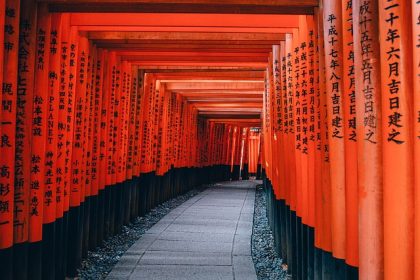
This isn’t a problem for Japan because there is little misconception over what a first-degree black belt is. Also, as mentioned, most of the time fifth-degree black belts and beyond are seen as martial artists who have truly mastered the syllabus. One koryu equivalent, under the menkyo grading system is the holder of a Menkyo Kaiden (license of full transmission).
Now, relevant to this discussion is whether a shorter time frame (to get a black belt), has any negative impact on legitimacy. For instance, is the dojo a McDojo or black-belt mill. This is a topic that we will cover in later parts of the series.
The time taken to get a black belt (broken down by martial art style)
Breaking down the time taken to get a black belt by martial art style is inherently meaningless. After all, it depends vastly on the chief instructor, the quality of instruction at a specific dojo and how the grading syllabus is structured.
Nevertheless, here are statements by both martial artists and dojos.
Aikido
How long does it take it get a black belt in Aikido?
According to Jikishinkan Aikido Dojo’s FAQ, it takes most people four to five years to attain first-degree black belt, provided they train several times each week. Gold Coast Aikikai’s FAQ gives a slightly different answer; five to six years on average, when training 4 to 6 times each week.
The poll from AikiWeb sums it up – the time varies among individuals and dojos. The majority of practitioners take 3 to 6 years. Some take less than a year, and others more than 12 years.
The Aikido Fast-Track Option
There is a legitimate 11-month International Sehusei Course by Yoshinkan Aikido Headquarters that awards first-degree black belt certifications. Although it takes only 11 months, trainees train four hours for five days every week – often longer. That’s an estimate of 880 hours of training – same as someone who trains for two two-hour session each week for 4.5 years.
BJJ (Brazilian Jiu-jitsu)
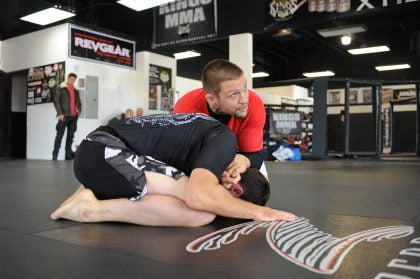
How long does it take it get a black belt in BJJ?
It takes up to ten years to get a black belt in Brazilian Jiu-jitsu and ranges from 4 to 16 years. BJJ requires not only technical proficiency but also verifiable sparring ability. Also, mentioned earlier, the grading system and belt significance are different from the regular dan/kyu ranking.
Of course, as with all martial arts, there are outliers with prodigious skill, people who have trained in another similar martial art, or both. Here is a list of BJJ martial artists who took under four years to get a black belt.
Judo
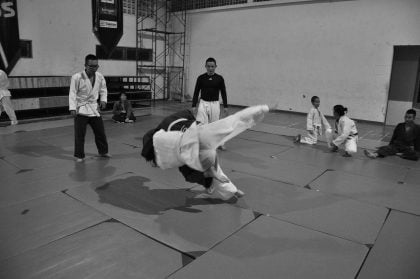
What about Judo – the martial art whose founder came up with the martial arts belt system? How long does it take to get a black belt here?
One to two years, 5 years, 10 years and possibly longer. You get the point. It varies.
The Judo Fast-Track Option
Similar to Yoshinkan Aikido, it is possible to get a black belt in Judo within a year, graded by the Kodokan in Japan. And it is certainly not easy.
Japanese Jujitsu
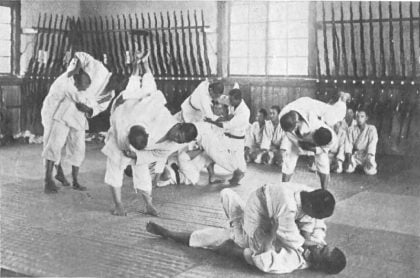
Japanese Jujitsu? How long does it take to get a black belt in this style?
According to Goshin Martial Arts – up to seven years but usually four to five years for shodan (first-degree) black belt. A handful gets it in less than four years.
For Ju-jitsu Center – approximately three years.
Again, this just goes to show that it really depends on the dojo.
Karate
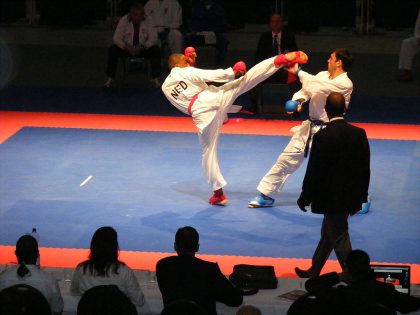
How long does it take to get a black belt in karate? Again, it depends.
The Japanese Karate Association, in Japan, specifies a minimum of three years of diligent training. Every subsequent degree of black belt takes several years.
King Lam’s Tamashii Karate and Tai Chi Center, which teaches Shotokan Karate state two to five years to be the norm.
Taekwondo
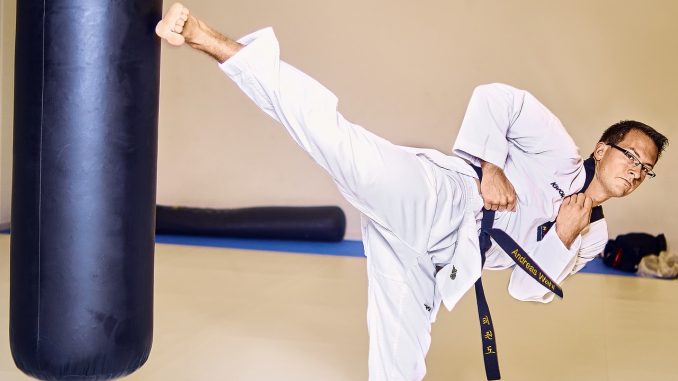
How long does it take to get a black belt in Taekwondo? It seems there are parallels to Japanese martial arts graded in their home country; it takes much quicker to get a black belt in South Korea.
In South Korea, where I live, you can get a Taekowondo black belt in 6-7 months with an intensive training (everydays, 1-2 hours -usually for foreigner), and the test for this belt is pretty serious. […] I have a Korean friend who explained me that he got his black belt during his military service in 4 month, but it was something else (if you can perform 6 hours of really intensive training everyday, you are good to go) […]
Roam Thorsteinsson’s Quora Answer
I achieved my black belt at 14 and am one of only 6 people in my entire organization to have done so. So it took me 6 years, training 2–3 times a week on average.
Bottomline: Time Taken to Earn a Black Belt

There are many factors that affect the length of time for you to earn a black belt. Evidently, from the above, each martial art style, each variant of a style, and each dojo is different. The quality of instruction is also a factor.
Hence, with these differences, knowing how long on average it takes to get a black belt is meaningless. You can’t use the average result and expect a particular dojo to fall within that time frame.
It is enough to know that the range for earning a first-degree black belt is between four to twenty-seven years if you are training in martial arts for leisure.
If you really want to know how long it takes to become a black belt at a particular dojo, either ask the senior students or the instructor(s).
The Way to Black Belt: A Comprehensive Guide to Rapid, Rock-Solid Results
This is a great book that practically prepares you to get a black belt and become a better martial artist.
More to Come – Martial Arts Proficiency & Mastery
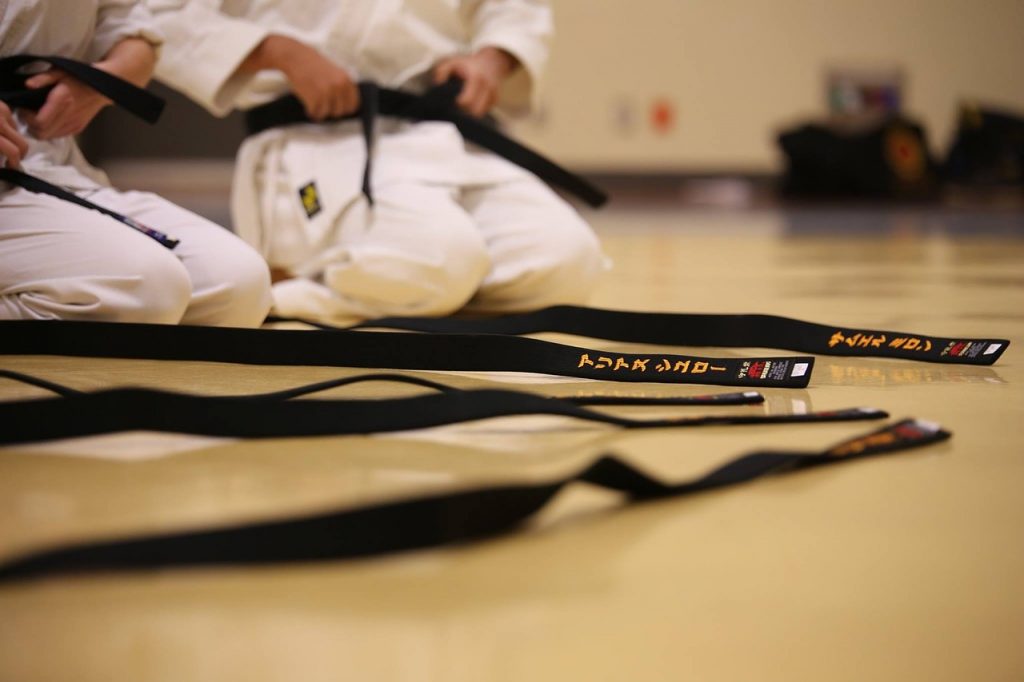
Using the black belt as an indicator of mastery relies on a flawed assumption. Instead, we need to ask specific questions on martial arts mastery to yield useful insight. In the same vein, beginners are more likely to be interested in the time it takes to be good enough. They’d rather know how much time they need to train to mobilise their skills in real life.
The next part of the series will cover exactly that.
Also, with regard to the question of “how long does it take to get a black belt?”, we will explore the reasons for people to ask the question in the first place. And find out why some senior-ranking martial artists have expressed annoyance towards the question.
Lastly, everyone is interested in speeding up the process to gain mastery or become a black belt. How do you do it? Is this only possible through Mc Dojos (and black belt mills)?
Articles in this series
In short, here’s what you can expect to come:
- For Beginners: How long does it take a beginner to learn a martial art (with average proficiency)?
- Mastery: How long does it take to master a martial art?
- Why So Curious About How Long It Takes to Get a Black Belt?
- How to Get a Black Belt Fast? Speeding up Martial Arts Mastery





![Parkour Gymnast Overcomes Anxiety – Eric Olsen [Interview Case Study]](https://www.wayofninja.com/wp-content/uploads/2016/06/14249756_1779432632314734_243152808733629665_o-420x295.jpg)
